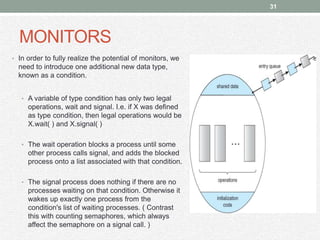The document discusses process synchronization in operating systems, emphasizing the need for coordination among processes accessing shared resources to avoid issues like data inconsistency. It covers several solutions including semaphores, monitors, and atomic transactions while also addressing classical synchronization problems such as the producer-consumer and readers-writers problems. Additionally, it highlights the importance of managing critical sections and introduces challenges like deadlock and starvation that can arise during synchronization.


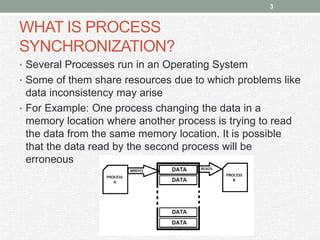
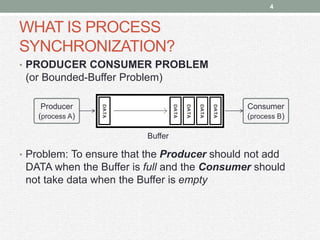
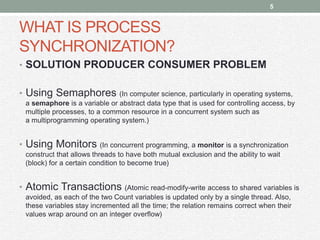
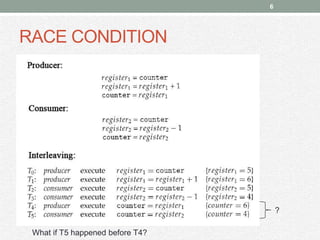


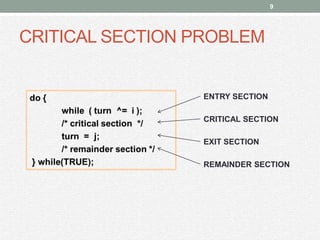
![PETERSON’S SOLUTION
• To handle the problem of Critical Section (CS), Peterson gave
an algorithm with a bounded waiting
• Suppose there are N processes (P1, P2, … PN) and each of
them at some point need to enter the Critical Section
• A FLAG[] array of size N is maintained which is by default false
and whenever a process need to enter the critical section it has
to set its flag as true, i.e. suppose Pi wants to enter so it will set
FLAG[i]=TRUE
• There is another variable called TURN which indicates the
process number which is currently to enter into the CS. The
process that enters into the CS while exiting would change the
TURN to another number from among the list of ready
processes
10](https://image.slidesharecdn.com/processsynchronization-151011113408-lva1-app6891/85/Process-synchronization-in-Operating-Systems-10-320.jpg)
![PETERSON’S SOLUTION
11
• If turn is 2 (say) then P2 enters the CS and while exiting
sets the turn as 3 and thus P3 breaks out of wait loop
FLAG[i] = false](https://image.slidesharecdn.com/processsynchronization-151011113408-lva1-app6891/85/Process-synchronization-in-Operating-Systems-11-320.jpg)
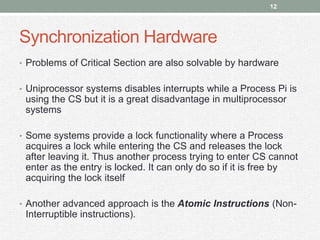
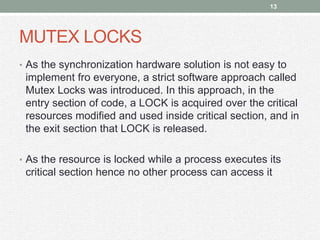
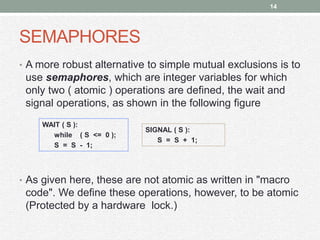

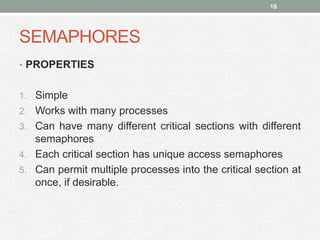
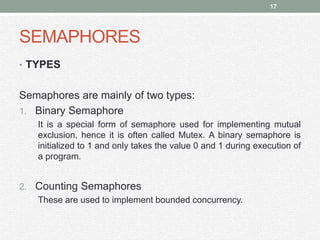
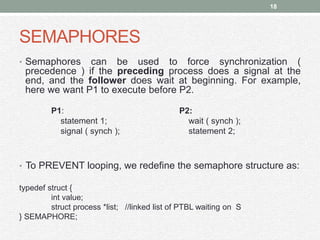
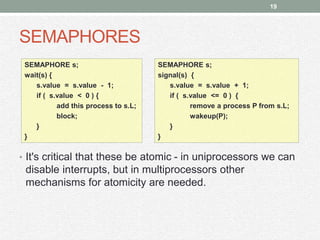

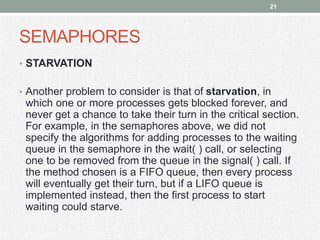
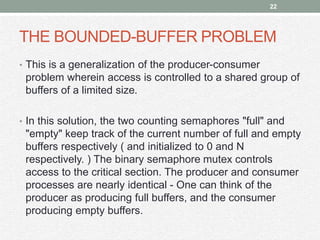

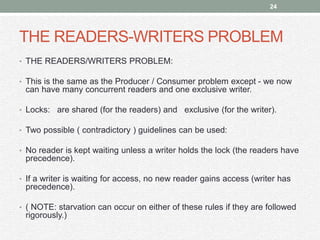
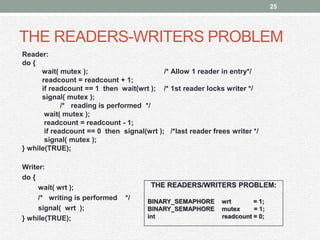

![DINING PHILOSOPHERS PROBLEM
• One possible solution, as shown in the following code section, is to
use a set of five semaphores ( chopsticks[ 5 ] ), and to have each
hungry philosopher first wait on their left chopstick ( chopsticks[ i ] ),
and then wait on their right chopstick ( chopsticks[ ( i + 1 ) % 5 ] )
27](https://image.slidesharecdn.com/processsynchronization-151011113408-lva1-app6891/85/Process-synchronization-in-Operating-Systems-27-320.jpg)



